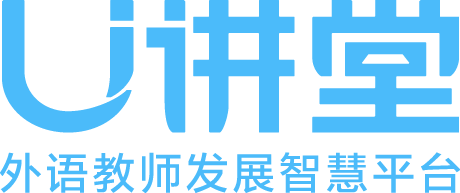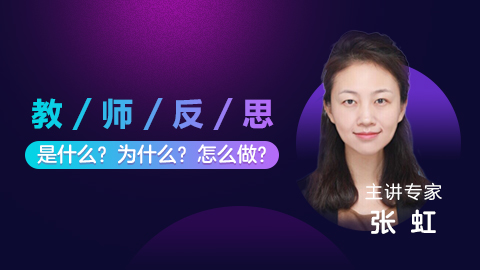如何反思
TPE
think:知道了什么,学会了什么
pizzle:还有什么困惑
explore: 继续探索
bbbbbb
教学反思是教师在教学过程结束之后必备的一项技能,如何反思,反思的内容都有哪些都是需要学习的
1. What / How / When to reflect
2. technical / practical / critical reflection
1. three patterns:
1) reflective teaching in action
2) reflective teaching on action
3) reflective teaching for action
2.
How we think (Dewey,1933) 杜威
Schon 肖恩
反思性实践者:reflective practitioner
reflection-in-action 对当下教学情况的反思
reflection-on-action 教学完成后的反思
reflection-for-action/ reflection-before -action 预反思
国外以质性研究为主
合作反思:
pre-service teachers: 职前教师
in-service teachers: 在职教师
novice-teachers:新手教师
cliches惯常用的方法
行动研究:action reseach
电子档案夹 electronic portfolios
reflective awareness and abilities
what, when and how to reflect
Dewey How we think (a book)
evidence-based
Van Manen
Michael J. Wallace
Thomas S. C. Farrell
stop, look and discover where they are
where they want to go
produce actions
一、重要国际文献
反思性教学是反思之后所产生的结果。
Evidence-based反思教学
“How We Think?" (By Dewey, 1933)
强调action-based, 要有后续的行动才是完整的反思。主动积极、持续不断的、严谨的思考。
是反思性的实践,理性、科学依据的的备选答案;
The Reflective Practitioner: How Professionals Think in Action(By Schon,1983)
提出了两个分类:Reflection-in-action:发生在行动当中的:in the midst of acting(课堂)教学机制:在教学中,超出预设,如何快速反思,进行调整,在行动上有所体现;Reflection-on-action发生在教学之后: thinking back, previous teaching experience, retrospective (回顾)
Reflection-for-action(By Van Manen 1991)三点收获:1. 可以找到其教学的优点、难点、弱点;2. 可以去评估在教学中的方法是否适合学生;3. 提高教师的教学实践。
Michael Wallace (1991) 提出三种模式:The craft model (手工艺模式),The applied science model (应用科学模式),The reflective model(反思模式)
Thomas Farrell (2012) 做了一个形象的比喻:as a compass (指南针),reflective practice帮助自己总结过去的教学,如何改进未来的发展方向。
二、重要的研究方向
国内研究:
1. 关于引进国外理论思辨文章;
2. 实证研究:反思现状的调查、反思量表的建构、反思工具的作用;
研究方法:以量化取向(问卷调查)为主;
研究存在问题:缺乏细致多维的考察
国外研究:
1. 方式:质性研究为主,或混合研究;
2. 内容:1)反思性日志
2)对新手的外语教师的研究
3)student teachers思辨发展
4)教学质量的实证影响
三、为什么反思?
反思是教师学习的动力(Farrell, 2015)
所有教师的核心活动(Walkington, 2005)
通过反思,教师可达到什么样的效果呢?
提升教学质量,在职可持续的专业发展;
具备的能力:
可以让教学惯常的方法提升;
对教学的深入理解;
规避重复无效的教学策略。
优秀的教师都善于反思。
反思对学生有什么益处?
学习者能更好地理解自己的教学;
可以更好解决教学中出现的问题。
四、如何反思?
The goal: is producing actions for enhanced student learning, better education, and a more just society for all students.
The content: reflect assumptions of oneself, schools and society, etc.
The processes: constant analyzing, questioning, and critiquing the established assumptions, and implementing changes.
Approaches: 10 tools/approaches
1. conducting small scale classroom research (action research 行动研究,其中最关键的是reflection)
2. attending conferences
3. reading relevant journal papers and books
4. teaching journals/diaries 通过记的数据来分析教学中的问题
5. electroni portfolios (ePortfolios)
6. discussion groups (teaching group teams, post observation conferences)
7. critical colleagues 通过找到批判性同事来交流
8. collecting information about students and receiving feedback from students
9. self and peer classroom observation
10. careful examination of lesson plans, and classroom video analysis
层次反思:
技术性反思:
情境性反思:强调教师的参与
批判性反思:
Davydd Greenwoord & Morten Levin( 1998:76)对行动的反思将促成对新的意义的建构
行动反思是个循环的过程
五、反思存在的问题和建议:
1. 对反思的理解,更多停留在经验总结;
2. 反思内容:囿于课堂教学与学生学习,对自身专业发展和教育环境还有待增强;
3. 反思层次:以实践性为主,
4. 反思过程:被动地应对问题为主,缺少主动问题意识。
5. 反思方式:最常用的是与同事一起谈、读文献、想一想、写日志。
建议:
1. dispositions: open-mindedness, responsibility, whole-heartedness;
2. evidence-based/data-based
3. levels of reflection: technical, situational, critical
4. mentor-mentee connections;
5. Observing others' class.
6. regular involvement in in-service professional development courses.
7. Collect students' positive and negative feedback.
8. Collect enough background information about their students.
参考写反思的模式:
GPS(Gains-Problems-Suggestions)
TPE(Think-Puzzle-Explore)
What do you THINK you know?
What PUZZLES you about this topic?
How can we EXPLORE these puzzles?


